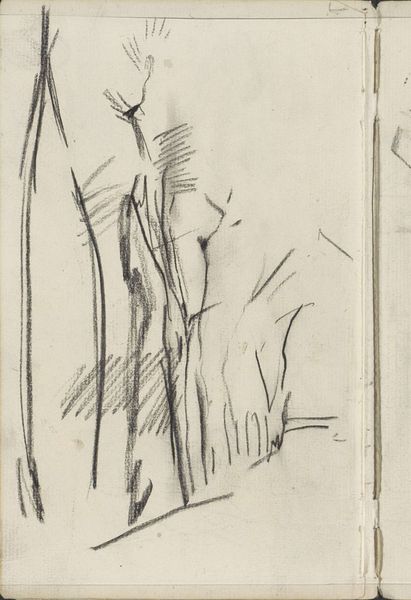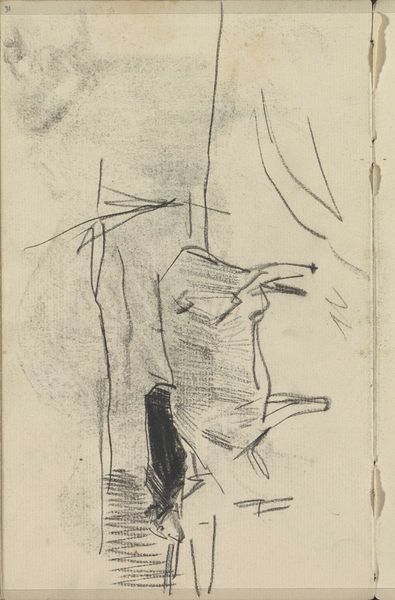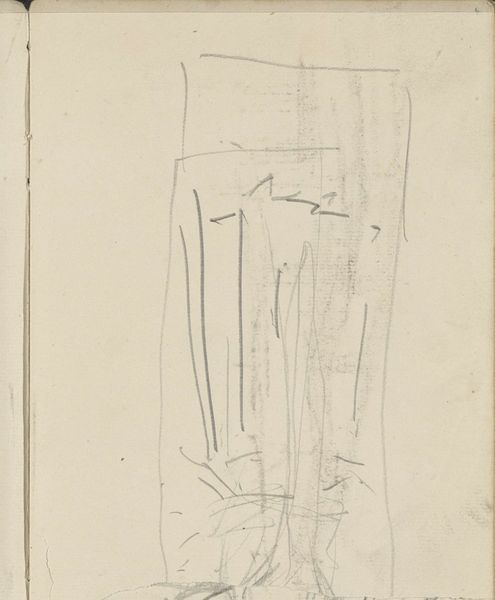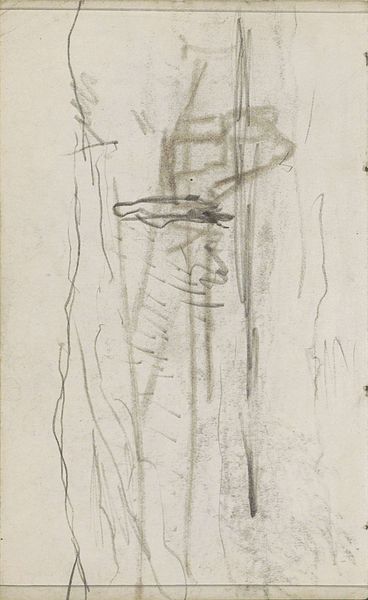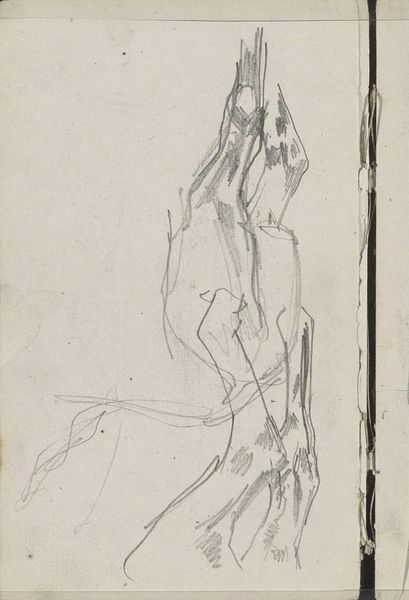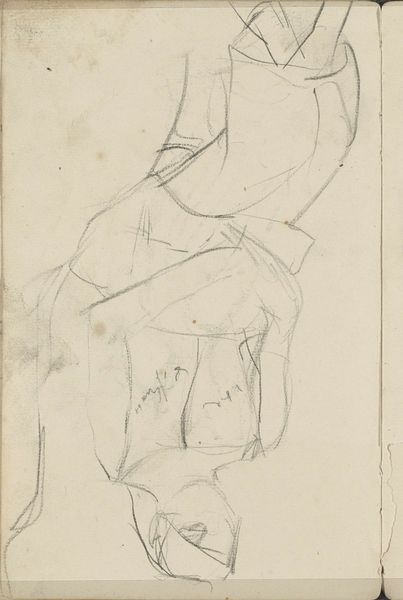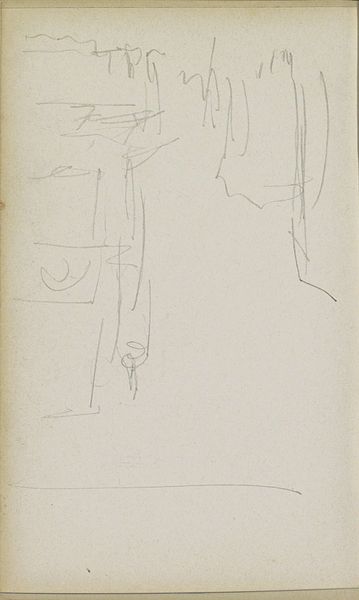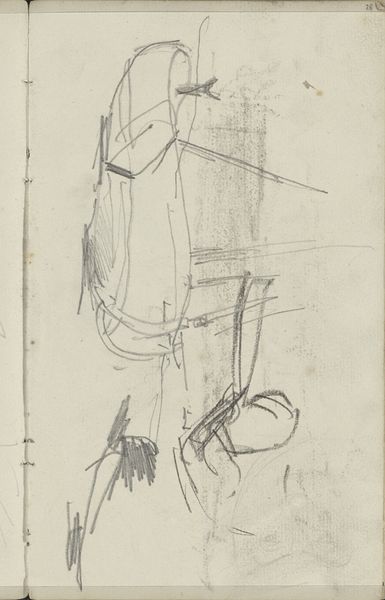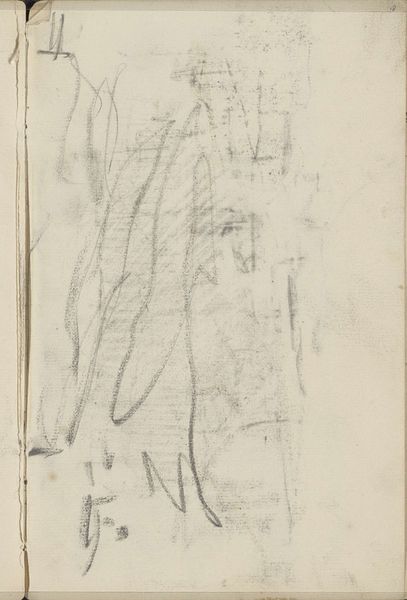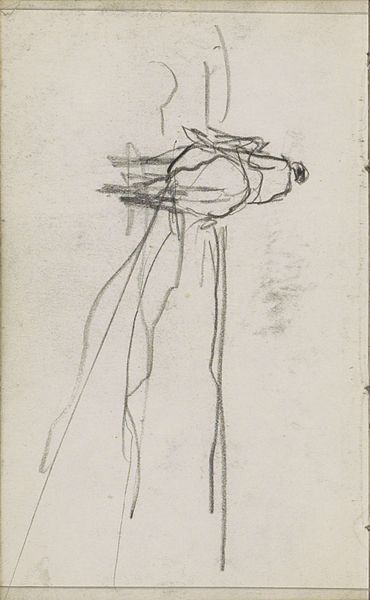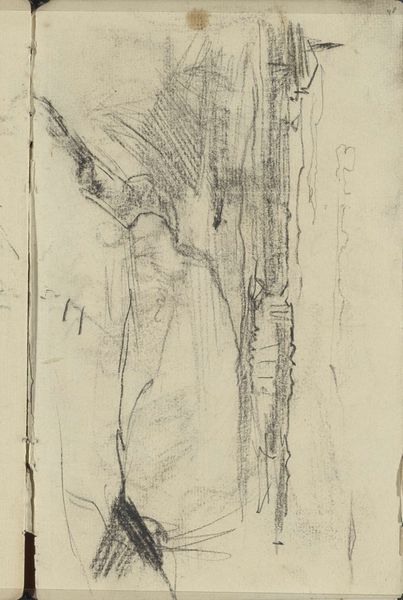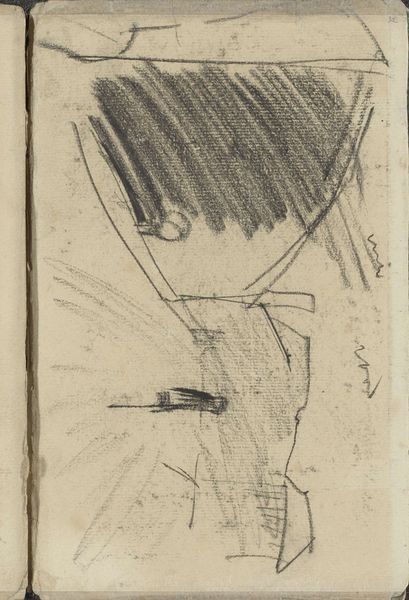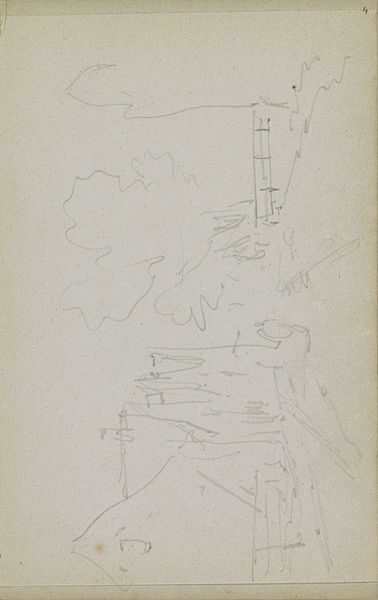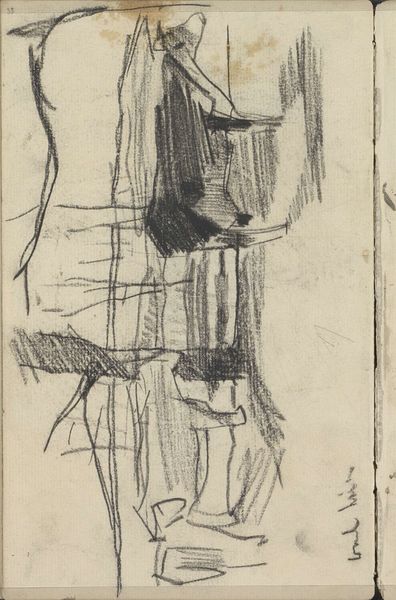
drawing, pencil, graphite
#
portrait
#
drawing
#
impressionism
#
pencil sketch
#
pencil
#
graphite
#
realism
Copyright: Rijks Museum: Open Domain
Editor: Here we have "Studie, mogelijk van een landschap," a pencil drawing from around 1881 to 1883 by George Hendrik Breitner, residing at the Rijksmuseum. It feels like such an intimate glimpse into the artist's process, almost like we're looking over their shoulder. How do you interpret this work, especially considering the context of its creation? Curator: It's important to recognize that this was produced during a time of significant urban expansion in Amsterdam. Breitner was keenly interested in representing the everyday life of the city, especially the lives of the working class. Given that, this seemingly simple sketch opens up broader questions. Editor: Such as? Curator: Well, it makes you wonder what the purpose was, or if he created a landscape later with this sketch as inspiration? Given his realist leanings, Breitner wasn’t just documenting; he was framing a specific vision of the city, which was greatly changing with industrialism and its effects on social stratifications. He used the lens to address that transformation, its role in shaping our historical understanding of Amsterdam. How do you see it reflecting or perhaps even shaping public perception of that era? Editor: That's fascinating! It prompts a complete shift in perspective from just admiring lines to acknowledging it as the result of Breitner’s socio-political lens. Curator: Exactly. And that perspective is key in historical works like this: we have to analyze it both on its technical artistic value, and in terms of socio-political purpose and intent. Thinking this way may help us consider what Breitner, the city of Amsterdam and his place in that landscape was doing as a political maneuver and why? Editor: It’s amazing how much a simple sketch can reveal about a whole era when you consider the social forces at play. Thanks for your explanation! Curator: It also underlines the power artists wield, intentionally or not, in shaping how future generations understand the past. I appreciate your interest.
Comments
No comments
Be the first to comment and join the conversation on the ultimate creative platform.
